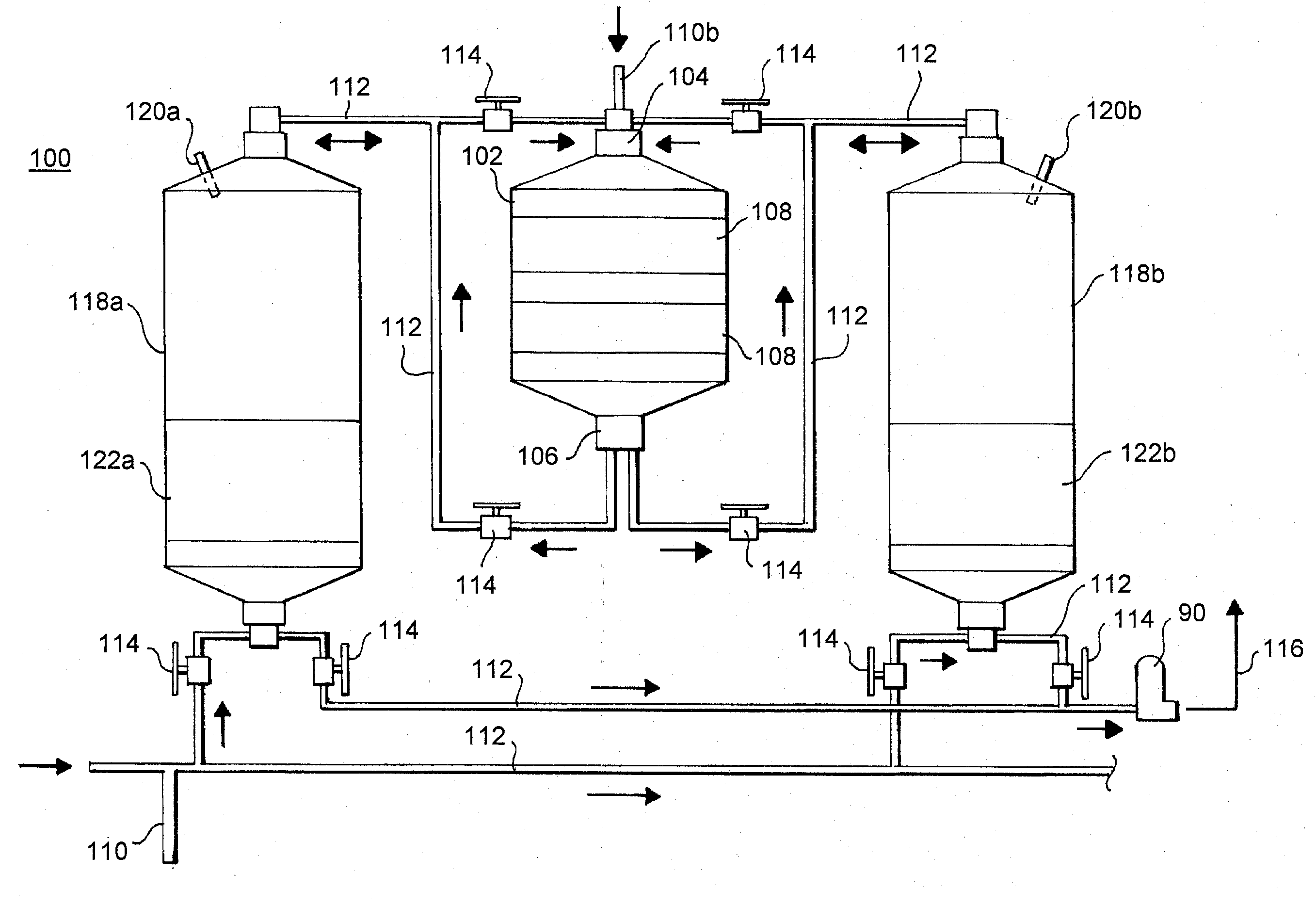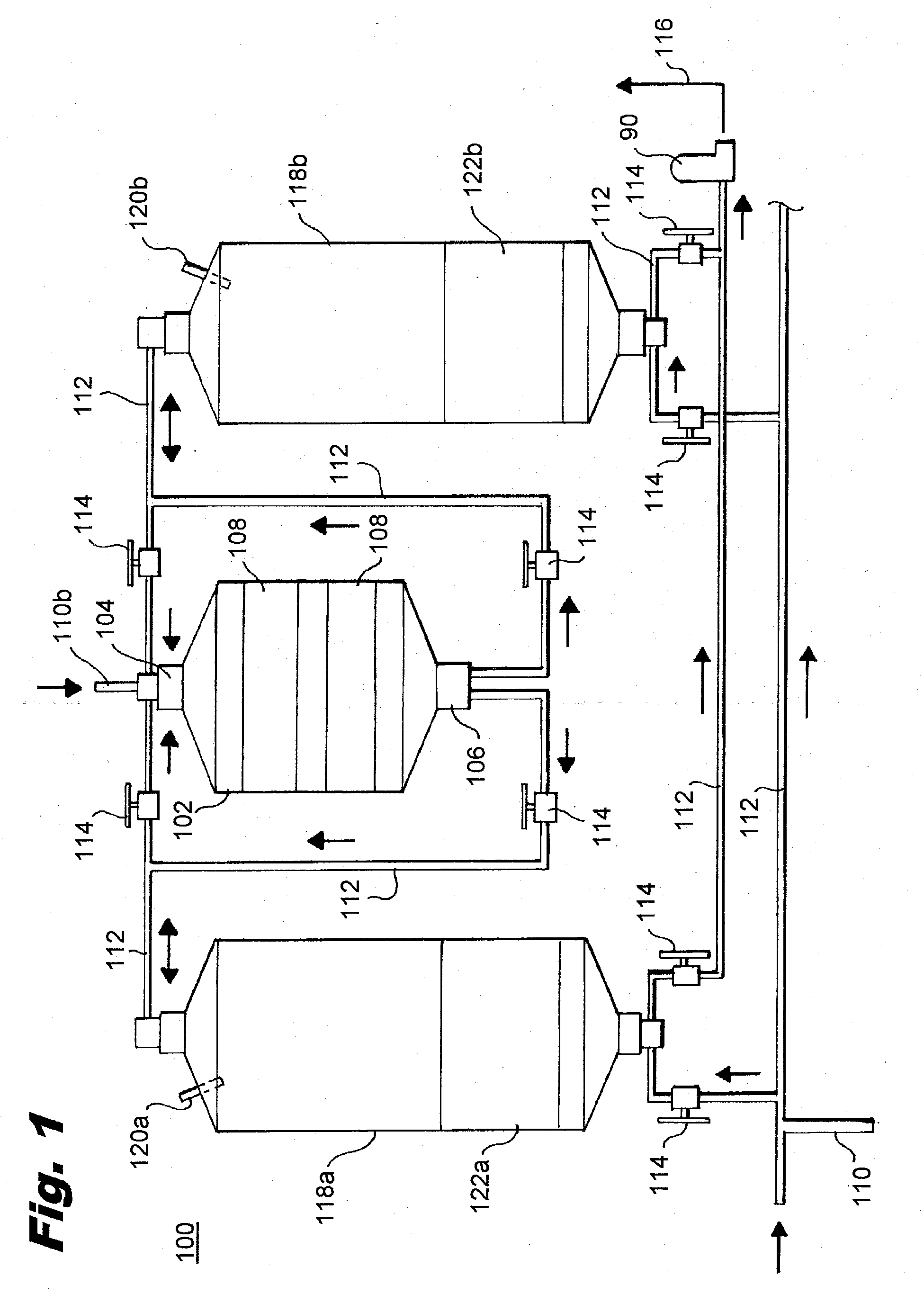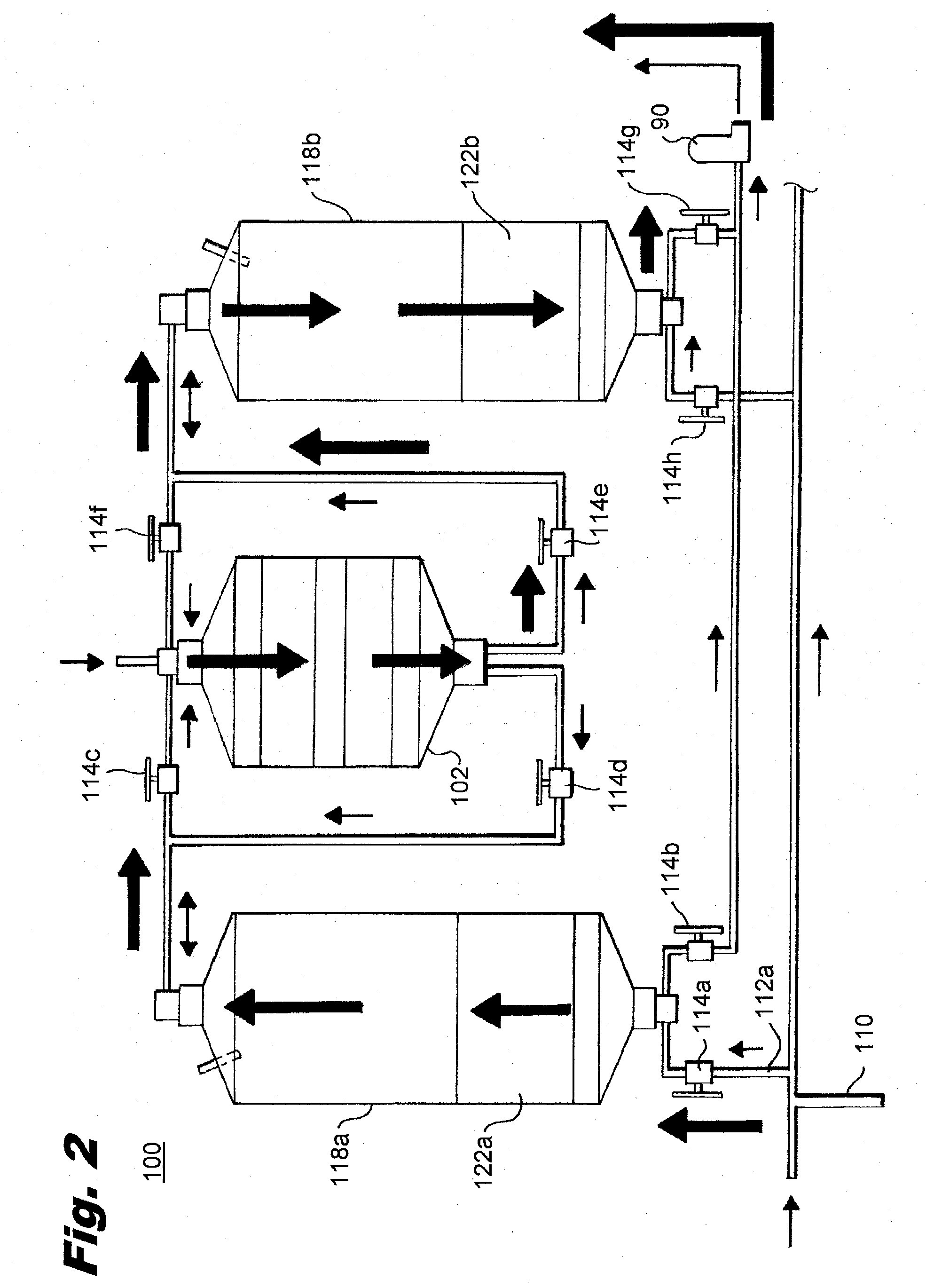Systems and methods for high efficiency regenerative selective catalytic reduction
- Summary
- Abstract
- Description
- Claims
- Application Information
AI Technical Summary
Benefits of technology
Problems solved by technology
Method used
Image
Examples
Embodiment Construction
[0027]Reference will now be made in detail to the present preferred embodiments of the invention, an example of which is illustrated in the accompanying drawings. The process and corresponding steps of the invention will be described in conjunction with the detailed description of the system.
[0028]The devices and processes presented herein may be used for reducing NOx emissions in industrial and power generation plant equipment. Many of the concepts herein are explained further in U.S. Patent Application Pub. No. 2006 / 0067865, incorporated herein in its entirety. The present invention is particularly suited for reducing NOx out of flue gases prior to release into the atmosphere, in high-temperature combustion applications such as power plants, boilers, industrial machinery, and other similar equipment.
[0029]In accordance with the invention, a system for regenerative selective catalytic reduction is provided including a catalyst chamber having an inlet and an outlet, with a flow path...
PUM
| Property | Measurement | Unit |
|---|---|---|
| Fraction | aaaaa | aaaaa |
| Fraction | aaaaa | aaaaa |
| Fraction | aaaaa | aaaaa |
Abstract
Description
Claims
Application Information
 Login to View More
Login to View More - R&D
- Intellectual Property
- Life Sciences
- Materials
- Tech Scout
- Unparalleled Data Quality
- Higher Quality Content
- 60% Fewer Hallucinations
Browse by: Latest US Patents, China's latest patents, Technical Efficacy Thesaurus, Application Domain, Technology Topic, Popular Technical Reports.
© 2025 PatSnap. All rights reserved.Legal|Privacy policy|Modern Slavery Act Transparency Statement|Sitemap|About US| Contact US: help@patsnap.com



